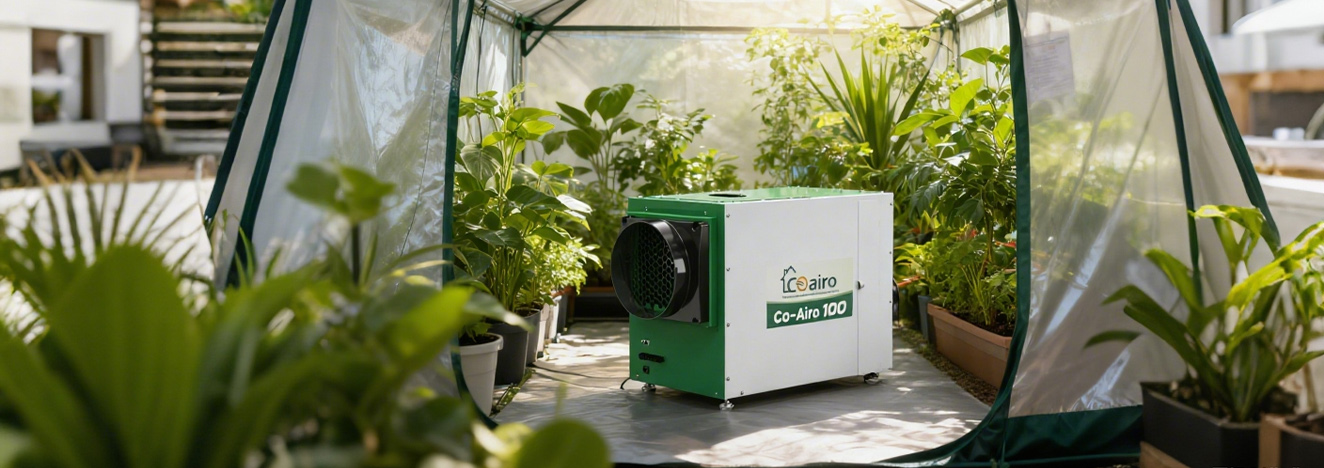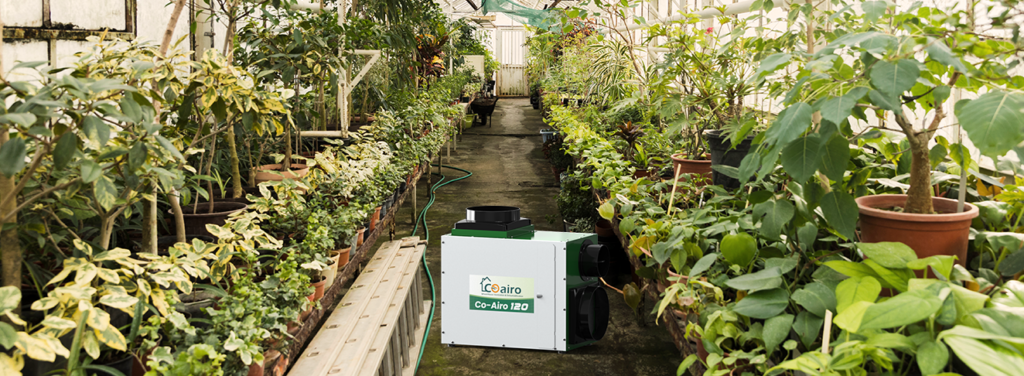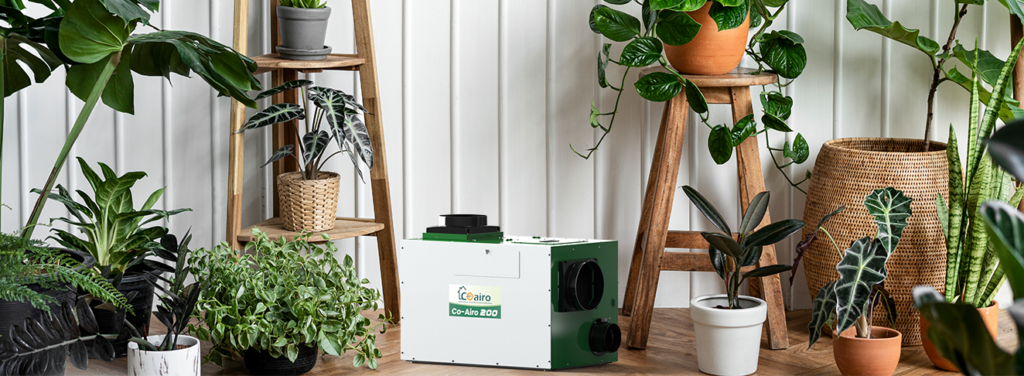Introduction
Humidity is essential for plant growth, particularly in a grow tent where conditions are carefully controlled. It affects nutrient uptake, photosynthesis, and overall plant health. Balanced humidity helps plants grow strong, reduces stress, and improves yield.
However, when grow tent humidity rises too high; you may notice powdery mildew, mold, and pests invading your setup. These issues can quickly affect your plants’ health and yield.
The good news is that you can manage humidity effectively. This guide provides 10 practical tips on how to lower humidity in a grow tent, from daily habits to investing in professional tools like a CoAiro dehumidifier inside grow tent setups.
How to Lower Grow Tent Humidity: 10 Effective Tips
1. Use a Dehumidifier- The Smartest Way to Control Humidity
Nothing works better than a dehumidifier inside grow tents to lower moisture level. A grow room dehumidifier actively removes excess water from the air, keeping humidity in the optimal range for plant growth. When considering a dehumidifier, consider:
- Compact size so it easily fits inside your grow tent
- Energy-efficient design to save electricity
- Quiet operation to avoid disturbing plants
- Low maintenance for long-term use
CoAiro dehumidifiers are designed for both home growers and commercial setups. They are:
- Powerful: Capable of removing high levels of moisture ranging from 90-165 PPD quickly which make them suitable even in larger grow tents
- Durable:Built to last and perform consistently over time
- Energy–efficient:Reduces electricity costs while running continuously
- Quiet: Maintains a peaceful growing environment
Using a CoAiro dehumidifier insider grow tent setups ensures that humidity stays stable, which supports photosynthesis, nutrients absorption and overall plant health.
2. Ventilation
Good airflow removes stale, humid air and brings in fresh air rich in CO2. This not only keeps humidity under control but also faster and better yields. Acornhorticulture revealed that ventilation system is vital for a successful grow tent and healthy plants because it helps plants get the carbon dioxide they need for photosynthesis and stops problems like pests and mold. For good ventilation
- Open air vents regularly
- Use an inline fan to pull in fresh air
- Add an exhaust fan to push out humid air
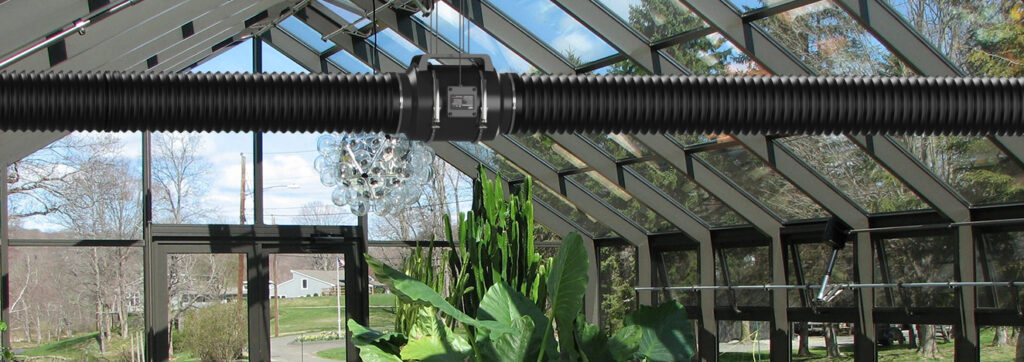
3. Improve Airflow with fans
Fans are essential for keeping air moving inside your grow tent. Without proper airflow, hot spots form and humidity can rise dangerously. Install
- Oscillating fans which spread air evenly across the canopy
- Inline fans which bring in fresh air from outside
- Exhaust fans which push out hot and humid air
Angle fans slightly above the plants to help moisture evaporate more efficiently.
4. Control Water Habits
Overwatering or watering too frequently is a major cause of humidity issue in grow tents. It will cause excessive water remaining in grow medium and runoff system, which will passively increase grow tent humidity. Practicing disciplined and timely watering can mitigate this issue.
- Water the plants only when the top soil feels dry
- Water your plants in the morning so that any excess moisture evaporates during the day.
- Use drip trays under your pots to collect excess water and prevent evaporation
5. Prune and Space Plants Properly
Dense plant foliage absorbs moisture and reduces the airflow, resulting in a humid environment within your canopy. You can avoid this condition by considering these practices.
- Remove lower leaves that receive low light
- To improve air circulation, remove excessive foliage.
- Always prune before watering to avoid excess humidity buildup.
Remember that moderate and selective pruning is preferable to excessive defoliation, which can stress plants and temporarily raise grow tent humidity as they release moisture.
6. More Space, Less Humidity
Excessive plant density can also contribute to increasing the grow tent’s humidity. Plants release water into the air by transpiration. Crowded leaves and branches stop air from moving, which build up moisture.
Reduce the planting density and spaced them correctly in the grow tent. This will give your plants more breathing room. The optimal plant spacing is determined by the type of plants you are growing, their growth pattern, and the size of your grow tent. Here are the general guidelines.
- Small Plants:6-12 inches apart. These plants are compact and can be grown closer.
- Medium Plants:12-18 inches apart. These plants needs a bit more room to grow.
- Large plants:18-24 inches apart. Larger plants require more space, usually one plant per square foot or slightly less
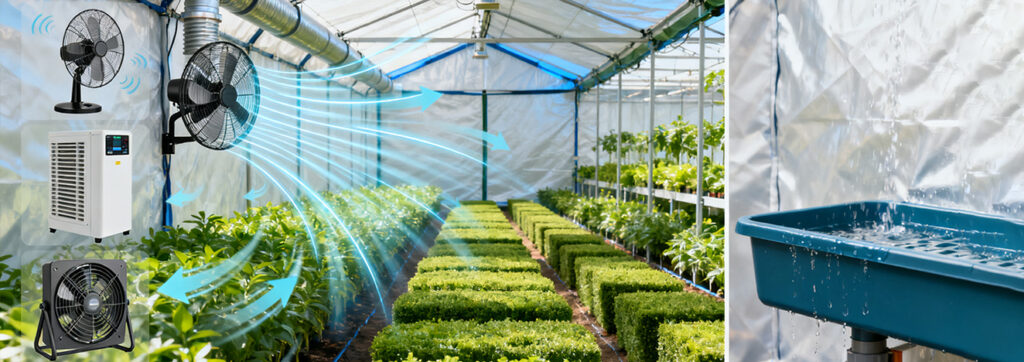
7. Choose Grow Lights Wisely
Light affects both temperature and humidity. Some lights, such as high-pressure sodium (HPS), produce more heat, which can raise the moisture level. On the other hand, LED grow lights that are proven to emit less heat, thereby avoiding excessive temperature increases, are the more intelligent choice for humidity control (Nelson and Bugbee, 2014).
Proper light height is also important. Too close can overheat plants, too far can make them stretch. Correct placement supports healthy growth while controlling humidity.
8. No Room for Stagnant Water
Standing water on the ground can contribute to high humidity. Worse, stagnant water reduces molecular oxygen, creating an environment favorable to the growth of bacteria.
- Remove standing water to reduce humidity in the grow tent
- Regularly check trays, pots, and corners of the tent for standing water
- Clean up spills immediately.
9. Seal your grow tent for stable Humidity
Insulation is essential for controlling humidity in a grow tent. A well-insulated tent keeps the temperature and moisture stable.
- Check for any gaps or spots where outside moisture might sneak in and mess up the environment of your tent.
- Using thermal blankets is a great way to improve insulation and stabilize environment.
- Sound insulation creates a perfect home for your plants to thrive.
10. Invest in a Smart Humidity Control System
For growers with larger setups, an innovative system that combines sensors, fans, and a dehumidifier inside grow tent spaces is ideal. These systems automatically adjust airflow and moisture removal, giving you peace of mind.
CoAiro Dehumidifiers are built for tough and commercial use, they have the power to handle even the most humid grow tent with ease. They run quietly, save you money with energy-efficient technology and work 24/7 to keep humidity stable.
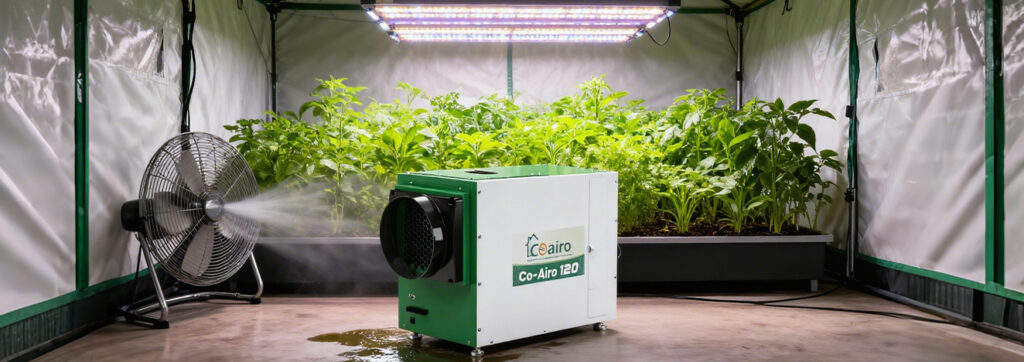
Why CoAiro Dehumidifiers are the Best Choice
When it comes to keeping humidity under control, nothing matches the power and reliability of CoAiro dehumidifiers. Whether you are growing in a small grow tent or managing a large commercial space, CoAiro has a tailored solution to match your space—and your plants’ needs.
Here’s why serious growers and homeowners trust CoAiro:
- Powerful Moisture Removal: With models ranging from 90 to 165 PPD (pints per day), CoAiro handles every scenario—from 100-sq-ft home tents (Co-Airo 100, 90 PPD) to 4,500-sq-ft commercial grow areas (Co-Airo 200, 165 PPD). No more oversize units wasting energy or undersized ones failing to fight mold.
- Fresh Air Function:Unique among dehumidifiers, CoAiro’s fresh air design allows you draw in clean, fresh air from outside—boosting CO₂ levels inside the tent to fuel photosynthesis, while still removing excess moisture. It is not just humidity control; it’s better air for bigger yields.
- Multiple Setup Options:Side or top air outlet installation, multiple duct connections, and two airflow levels give you total control over how your system runs.
- Energy saving and cost-effective:Built-in precooling technology reduces energy use by up to 25% compared to standard dehumidifiers, while boosting dehumidification performance, saving your money.
- Smart Convenient Controls: The wired LCD controller makes it easy to manage humidity levels and active fresh air mode and monitor performance with just a touch.
- Rugged and Reliable: Designed for tough environments, CoAiro dehumidifiers include automatic restart, auto defrost, and memory functions. The durable metal casing resists scratches and wear, so it lasts for years.
- Peace of Mind:Every unit is ETL certified for safety and backed by a five-year limited warranty and lifetime technical support. If you run into issues, CoAiro’s team is there to help, so you can focus on growing, not fixing equipment.
Conclusion
Managing grow tent humidity does not have to be hard. With the right mix of simple habits, basic tools, and the right equipment, you can give your plants the best environment to thrive. Start by improving airflow, controlling watering, and choosing a bright grow light. For long-term results, invest in the best dehumidifier for grow tent setups, such as CoAiro’s advanced models.
For long-term success—maintaining consistent humidity at every growth stage, preventing mold and mildew, and maintaining high yields—invest in a dehumidifier designed specifically for grow tents: the Co-Airo 200. It’s built to handle the heavy lifting (removing 165 PPD of moisture—enough for dense flowering tents or commercial grow areas), adapts to your space (up to 4,500 sq. ft., perfect for large greenhouses or multi-tent setups), and requires minimal setup—just plug it in, adjust the airflow, and go. No more guesswork and worrying about humidity—just healthy plants and reliable harvests.
